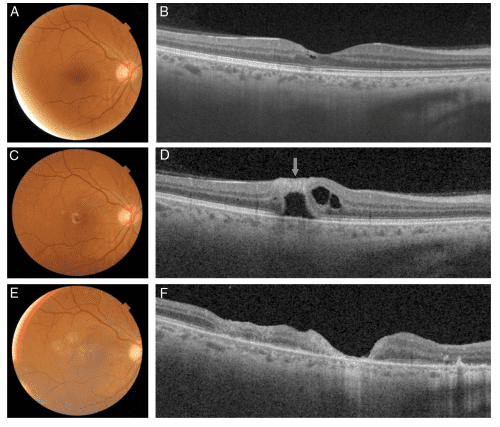Scleroderma can affect one area of the body or many organs at once.
Posterior electrode retinography showing granulomatous retinitis with hemorrhage (asterisks) and occlusions of venous (arrowhead) and arterial (arrows) vessels. (C) FAG showing venous (arrowhead) and arterial (arrowhead) vascular changes. Photo: case report. Spanish Society of Dermatology.
acute retinitis due to Cytomegalovirus (CMV) occurs mainly in patients with acquired immunodeficiency syndrome (AIDS), who are severely immunocompromised.
However, it is rarely caused by immunosuppressive therapy in organ transplants, precancerous diseases, or patients taking systemic steroids.
In other cases, CMR may appear in immunocompetent patients with some type of immune defect, such as advanced age, diabetes, use of steroids or non-cytotoxic immunosuppressants.
Exactly much more is said about the immune role in patients with rheumatic diseases, such as what happened in a 52-year-old woman diagnosed with sclerodermamixed connective tissue disease, interstitial lung disease and severe malnutrition due to esophageal injury, in treatment with prednisone, mycophenolate and hydroxychloroquine, who developed Chronic retinal necrosis by Cytomegalovirus.
Acute retinal necrosis is characterized by anterior granulomatous uveitis with vitreous inflammation and the appearance of one or more foci of full-thickness retinal necrosis with a white appearance associated with gradually progressing peripheral periarteritis.
The authors of the case stress that it is important to recognize this rare form of CMR in patients not infected with HIV, but with a type of partial immunodeficiency, in order to start treatment as soon as possible, and to avoid complications of this type of virus. Retinitis.
The scleroderma It is an autoimmune rheumatic disease of connective tissue that causes inflammation in the skin and other areas of the body. It causes hard, thick patches of skin. The scleroderma It can affect one area of the body or many organs at once.
access to the case over here.

